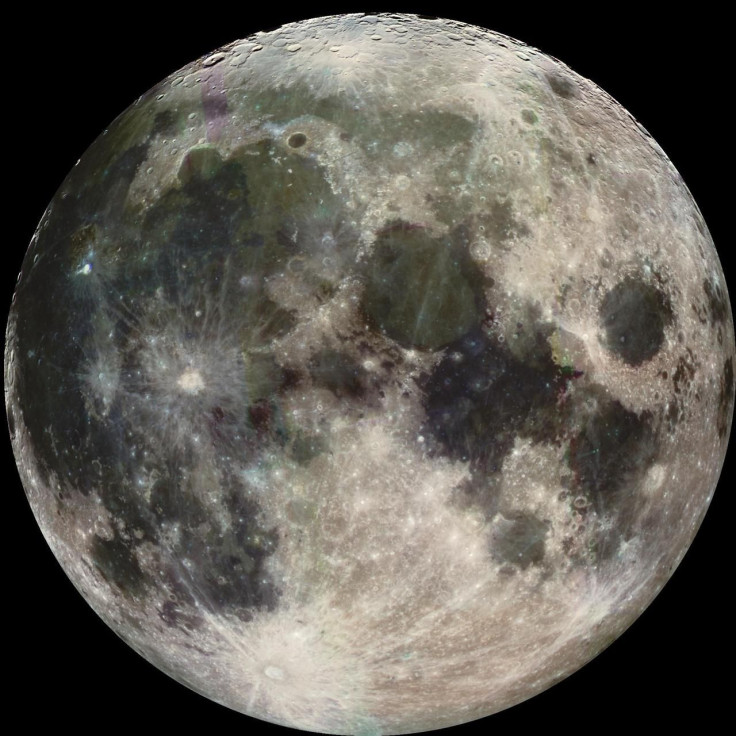NASA's Lucy Spacecraft Snaps Stunning Photos Of Earth, Moon
KEY POINTS
- NASA shared some of the photos Lucy snapped before and after its close pass
- One of the photos shows just how distant the Earth and Moon are from each other
- The photos of the Moon show its craters and even an Apollo landing site
NASA's Lucy spacecraft recently made a close pass of the Earth, and it captured stunning snaps of the Earth and the Moon.
The Lucy spacecraft swung close to the Earth on Oct. 16 for the first of its three gravity assists on its mission towards the Jupiter Trojan asteroids. This week, NASA shared some of the photos Lucy snapped just before and after its close pass, showing incredible photos of our planet and the Moon.
One of the photos the agency shared was a cropped one of the Earth. Taken using the Terminal Tracking Camera (T2CAM) system of identical cameras, Lucy captured it on Oct. 15, a day before the close approach, when it was 380,000 miles (620,000 kilometers) away from Earth.
The image, which was taken as a part of its instrument calibration, shows an incredible view of one side of our planet. This includes a view of Hadar, Ethiopia, according to the agency.
Hello, beautiful! As the #LucyMission passed by Earth recently, it captured this look at our planet. The upper left of the image includes a view of Hadar, Ethiopia, home to the 3.2 million-year-old human ancestor fossil for which the spacecraft was named https://t.co/EiQj0xIDr3 pic.twitter.com/BaO0s6PTbO
— NASA Solar System 🪐🍬🎃🌖 (@NASASolarSystem) October 25, 2022
NASA also shared the photo that Lucy captured with the T2CAM days prior, on Oct. 13. This time, it was still much farther at 890,000 miles (1.4 million kilometers) away. It was also a part of the instrument calibration. But this time, it captured a rather haunting view of both the Earth and the Moon in one image.
In it, one can see just how distant the two objects seem to be from each other.
Lucy also snapped this family portrait of Earth and the Moon (far left, click to enlarge) from a distance of 890,000 miles (1.4 million kilometers), taken as part of an instrument calibration sequence to prepare for Lucy's upcoming asteroid explorations. More images to come! pic.twitter.com/hbm3umuRGB
— NASA Solar System 🪐🍬🎃🌖 (@NASASolarSystem) October 25, 2022
About eight hours after the close pass, Lucy captured stunning close-up images of the Moon, showing the deep craters on the surface.
At the time, the spacecraft was between the Earth and the Moon, being about 140,000 miles (230,000 kilometers) away from the Earth's satellite. Its position at the center of the two objects gives it a somewhat similar view of what people can see on Earth, the agency noted.
This time, it was taken using the Lucy Long Range Reconnaissance Imager (L'LORRI) and shows a patch of the Moon's surface that's about 600 miles wide. It even captured a piece of history, as it features one of the Apollo landing sites.
#LucyMission captured this image 140,000 miles from the Moon’s surface 8 hours after it flew by the Earth during a gravity assist.
— NASA Artemis (@NASAArtemis) October 26, 2022
The lower-right portion of the image is dominated by the Apennine Mountains, the landing site for the Apollo 15 mission. https://t.co/S2ZLA9MqYX pic.twitter.com/3jNOPhZczz
On the NASA feature, one may see two other photos of the Moon taken just hours after the close pass. One of them is of the Moon's Central Highlands, showing a swathe of craters both familiar and relatively new. Meanwhile, the other shows a mosaic that stretches from the upper to the lower part of the Moon.
In a few years, Lucy will come close to Earth again for its second close pass, bringing it closer to becoming the first spacecraft to visit the "never-before-visited" asteroid population.

© Copyright IBTimes 2024. All rights reserved.






















